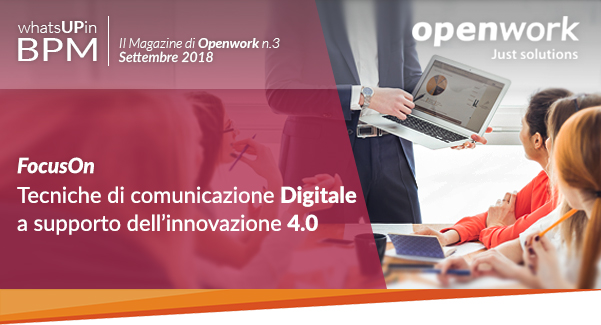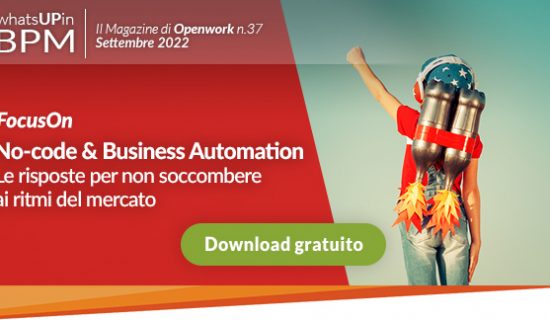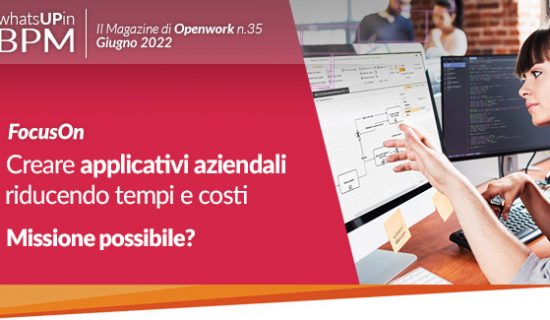Communication has always been one of the indispensable elements of Marketing and more generally for any company that aims to promote or sell products/services.
Compared to a few years ago, we are witnessing a real revolution on the subject, both because the market has become increasingly aligned with the needs of companies and consumers, and because digital technologies have accelerated the pace toward innovation by integrating techniques and tools capable of bringing out messages that are increasingly personalized and, above all, visible in the right place at the right time.
This evolution is called Digital Marketing, a direct approach with stakeholders that while on the one hand boosts companies' business on the other allows potential stakeholders to create an effective thread with organizations in order to get quick answers to their needs.
For ICT(Information Communication Technology) companies to quickly adapt to this type of approach not only becomes a principle from the "ethical" point of view, but above all a fundamental aspect to preside over the main channels of communication and counter the competition; in this way the risk of being cut off from that slice of the market that operates, sometimes even latently, through the web is minimized.
In the time of ENTERPRISE 4.0, being a truly innovative company does not only mean making structural, logistical and organizational changes with the support of new technologies; a change is also needed from a cultural and communicative point of view in order to strengthen the Brand and convey to stakeholders - quickly and effectively - the added value of one's offerings.
This change is necessary because, at a time in history when time and information travel at the speed of light, visual impact and message clarity become essential aspects to capture the target audience's attention.
This new approach is applied by integrating into its staff specific figures capable of planning digital messages and strategies with the support of the appropriate tools to disseminate them online.
One of the key determinants of digital marketing is undoubtedly the analysis of data generated by advertising campaigns; in fact, marketing activities carried out through web channels (websites, social networks, PayPerClick campaigns) are measurable, which means that each advertising action is subsequently followed by an in-depth analysis of the results obtained (business data and information).
An interesting experience is being made in Openwork using the Jamio platform to manage Contact Management, Customer Relinquishment Management and Trouble Ticketing. All data managed in the processes are stored in GDPR-compliant digital archives and feed dashboards built in QlikView (BI technology integrated, thanks to a connector, with Jamio) used for decision-making.
For a digital strategist, having a platform available, from any device, that can quickly filter and retrieve essential information for marketing activities can only facilitate the study phase and optimize planning time.
In conclusion, a company's Digital Transformation Program, if it is to be truly comprehensive and successful, must also include an innovative, consistent and long-lasting integrated communication plan to acquire new leads and increase Business opportunities.
Innovating is a necessity, how to do it is a choice.

*source SpazioDati s.r.l.
Because ERP and BPM are a perfect match!

Many medium to large organizations that have implemented sophisticated ERP systems wonder about certain aspects that become apparent only after careful post-implementation analysis.
With the adoption of a lERP, the satisfaction of having made work efficient is undeniable, being able to keep information and data under control and manage individual procedures by obtaining effective and timely "output" analyses.
ERP is undoubtedly perfect when handling cases involving only one business area, on very specific domains i.e., when operating with a vertical functional approach.
Instead, the efficiency of an ERP decreases significantly in cases of business processes involving multiple organizational figures from different areas. One example out of all helps us to fully understand the issue:
Let's focus on Supplier Order Management:
Responsibility for issuing a Supplier Order, an item typically handled in an ERP, rests with thePurchasing Department.
Certainly thePurchasing Department has all the vertical functionality in the ERP to serve its operations.
However, in a structured organization, the process of issuing orders to suppliers also involves parts of the organization that are typically not accustomed to using ERP.
That is, the process in its entirety goes beyond having handled the information reported in the order-to-supplier document, requiring additional activities that are no longer transactional and informational parts of the order itself, but rather ancillary information and processing that enable its issuance.
For example, the order to Supplier must be signed by one or more proxies before it is sent to the supplier.
The submission process does not end with a procedure in the ERP but with activities (signatures) that must be requested from users who do not belong to "Administration Finance and Control," the area of choice for using an ERP, but may have the most disparate functions in the Organization.
How do we manage it with an ERP?
It is inconvenient for a company to invest resources to extend the use of ERP to other areas and to train all affected departments.
Result: procedures make use of ERP but processes are managed by hand, i.e., through individual productivity tools (paper, file exchange with email) that do not allow any monitoring and control and that, paradoxically, lose all the efficiency gains that the investment on ERP was supposed to bring.
Mountains of paperwork make the business process slow, cumbersome, raising the risk of errors by no small margin.
It is precisely in cases like these (hundreds in an organization think, for example, of Rda Management, Investment Management, Supplier Qualification, Payment Authorization, New Product Development, Credit and Returns Management, just to mention a few titles ) that the integration between an ERP and a tool born to manage and keep under control business processes, such as a BPM, allows with easily calculable ROI, to extend the procedure beyond the boundaries of its own area, allowing it to live in a process of the organization. This is an intentionally simplified example of Extended ERP!
With the integration of a BPM tool, it will be super easy to obtain performance information such as:
- Timing of execution of activities,
- allocated resources and their level of saturation,
- Process cycle time,
- associated costs, etc.
The 'order lying under the paperweight becomes part of a digital process and is allowed to know exactly where it is and in what state.
Managers in control of performance, who are forced to manage them often out of the information system, will have clear and detailed information regarding, for example, the development time of a new product or the average order fulfillment time over the past month.
JAMIO 4.5 R1 coming in October
 Thanks to the new features of Jamio openwork Marimba 4.5 R1 will be possible to collaborate when creating or editing the document i.e., before making it available to the entire organization.
Thanks to the new features of Jamio openwork Marimba 4.5 R1 will be possible to collaborate when creating or editing the document i.e., before making it available to the entire organization.
In addition, new Document Processing capabilities will enable automations that help produce documentation and presentations even when documents consist of multiple parts each with its own life cycle.
It will be easier, for example, to create solutions to support Compliance Management and Drafting of documentation such as Contracts and Procedures.
Highlights:
- Executing processing workflows before publishing a document.
- Executing automated workflows that involve converting, merging, and editing files.
- Improved usability in managing the versioning of a document
- Improved performance of web application (Jamio on stage) and file attachment management by migrating to Microsoft Azure
- Functional enrichment of Rich Text Area control.
- Jamio on stage mobile user interface improvement
- Previewing spreadsheets and presentations.
OPENWORK FOR TECHNOLOGICAL INNOVATION IN HEALTHCARE

Cooperation and integration of clinical trial and care pathways, abbreviated CONTACT: this is the Innonetwork project presented at Fiera del Levante by Piero Cosoli (Project Coordinator and PM of Openwork), of which Openwork is the lead partner.
Created with the aim of realizing an ecosystem of practices, processes and tools supported by ICT technologies (Business Process Management, Cloud and Mobile in primis) for the integrated and "patient-centered" management of Medical Clinic and Clinical Trial pathways, the project pursues the following objectives:
- Enable the definition, execution and monitoring of clinical pathways developed by knowledge workers (care teams);
- include in these pathways the collection and analysis of "patient generated data," therapies and diagnoses, assessments and tests (lab and diagnostic);
- realize constant patient monitoring, allowing the prevention of adverse events due to specific patient characteristics, or the detection of collective changes in vital parameters.
The ecosystem will be tested in the field of "neurodegenerative diseases" on sample of Multiple Sclerosis patients on drug therapy at IRCCS Casa Sollievo della Sofferenza.
The project partnership, which in addition to the aforementioned IRCSS and Openwork also involves Sincon, Euronet, Informatica & Telecomunicazioni, the Polytechnic University of Bari, the women's startup Golem Plus and the University of Bari Spin Off Ser&P represents a true knowledge chain on digital health issues.
KEEPING UP WITH THE NEW NEEDS OF ENTERPRISES :
The Apex - Openwork partnership

New scenarios for the industry of the future, digitization, and ever-increasing market demands are pushing the IT sector to become increasingly competitive, governing complexity and adapting to fast processes of change.
This is the fertile humus ofinnovation, including through symbiosis and collaboration between companies.
Among the exemplary cases is certainly the partnership between Apex and Openwork, a synergy that has lasted more than 18 years that has been able to adapt to the significant market changes of recent years.
Apex is an applied IT engineering company capable of serving Industrial and Public Administration Clients with a diverse range of services. These include the development of applications and integration of existing ones into each individual business process by leveraging new technologies and continuous research advances for innovation.
In this market scenario comes into play the need to have a complete and flexible BPM (Business Process Management) platform such as that of Openwork and its pivotal product: Jamio, a no-code BPM cloud application capable of making business processes more efficient, building applications based on organizational and process logics that integrate with the most popular ERP and legacy systems.
We heard from Ilario Benetti, CEO of Apex.
Apex has over time become a small excellence thanks to its partnerships focused on strong technical expertise with Vendors of the caliber of SAP, QlikTech, Microsoft, Ipswitch. Among your partnerships we always see present, since 2002, the one with Openwork. What value can a partnership with an Italian vendor like Openwork express today given also your other excellent collaborations?
The partnership between Apex and Openwork is a very different relationship than two companies collaborating on business opportunities.
It is a bond that has grown over time with the two entities, through periods that have not always been easy for the country and for companies in the digital sector.
Several factors contribute to make the synergistic collaboration between these two great companies particularly effective, including the sharing of common goals, attention to customer needs, human relationships, and the sharing of the product roadmap. All of which are hardly found in international partnerships.
Are you also seeing a need in the marketplace for medium to large organizations to extend the scope ofERP through solutions such as Jamio openwork?
Digital transformation and the global competitive landscape require companies to continuously change processes to adapt to market needs. Legacy systems, for different reasons, are not always able to offer the mix of flexibility and speed of change required to seize new opportunities in a timely manner. A cloud platform designed to model processes and map organizational structures reacts quickly and cost-effectively, enabling information systems to respond to business priority in a stable and effective manner.
How do you see your partnership evolving in the coming years?
It is always complex to make predictions about future performance. What remains firm, however, is the principle of the relationship between two companies that, although they have grown a lot and changed a lot over time, continue to address specific solutions for the Italian market by bridging the functional gap that, to date, not even the digital leaders are able to cover.









